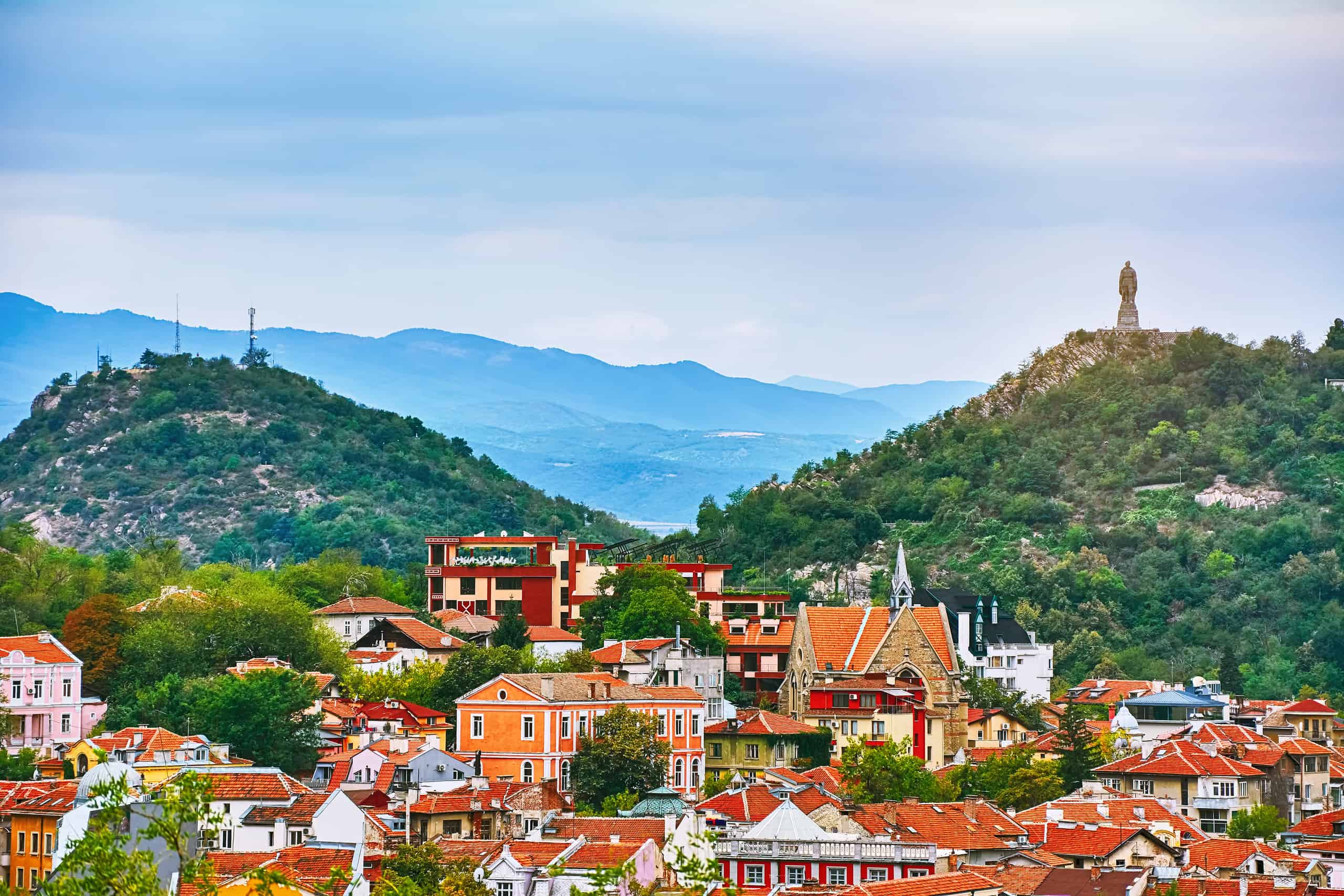Europe is rich in history. From the far western reaches of Cabo da Roca (the most western point in mainland Europe) to the Ural Mountains in the east, countless empires have risen and fallen across the continent. Many of these empires had capital cities that still stand today, while others have crumbled with the footsteps of time. Today, we will look at some of the oldest cities in Europe to learn a bit about the region. Here are the 10 Oldest Cities in Europe, plus some interesting facts about each one. Let’s get started.
The 10 Oldest Cities in Europe
Before we begin the list, it’s probably important we set a few boundaries.
First, there is a not single consensus on which cities are the oldest. Instead, it’s a collection of cities most researchers agree are among the oldest, with a roughly ordered structure that usually has some of the same names appear. Archeology isn’t perfect, and our list will reflect that.
Additionally, we will be looking at the oldest continuously inhabited cities. Otherwise, abandoned ruins would dominate the list (and that isn’t all that exciting).
Finally, it’s important to note that our boundaries for Europe roughly follow the Ural Mountains to the east and the Caucasus Mountains to the south. Anything south or west of those areas is politically/geographically classified as Asia (although the distinction is primarily cultural, but that’s a different article).
1. Plovdiv – c. 6000 BCE
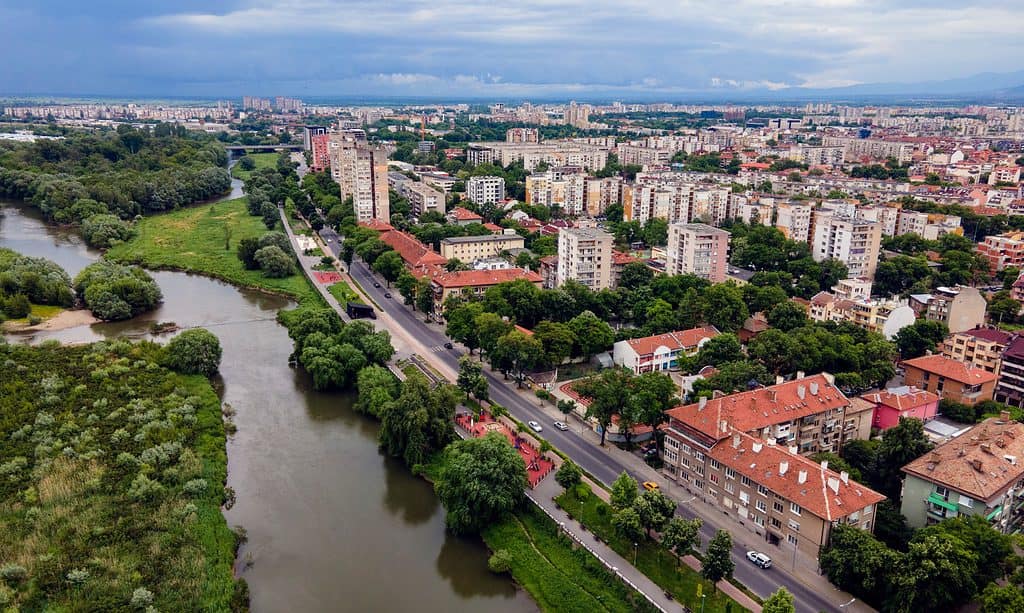
Plovdiv is likely the oldest city in Europe and can trace its roots back over 8,000 years.
©iStock.com/Denitsa Kireva
Plovdiv is a city in southern Bulgaria on the banks of the Maritsa River. It is the second-largest city in the country, after the capital, Sofia, and has a population of 350,000 people. Plovdiv is usually regarded as one of the oldest cities in Europe (if not the oldest), with evidence of neolithic human settlement dating back 8,000 years.
Plovdiv was originally a Thracian city before Philip II of Macedon (Alexander the Great’s father) conquered it in the 4th century BCE. He renamed it Philippopolis, which vainly translates to “the city of Philip.” Later, it became part of the Roman Empire and was named Trimontium, or “the city of three hills.” Plovdiv was ancient when the Romans conquered it, and a cultural and economic center in Thrace. Over the centuries, pretty much every major group and empire conquered Plovdiv at some point. Many ancient monuments are still visible today, including the Roman theatre, stadium, and aqueduct.
2. Argos – c. 5000-3000 BCE

Greece dominates the list, with Argos being one of the oldest cities in the country.
©Marianna Ianovska/Shutterstock.com
Argos is a city in the Peloponnese region of Greece. It is one of the world’s oldest continuously inhabited cities, with traces of human presence dating back to the Neolithic era (around 6000 BCE). In addition, it was also one of the first-ever city-states within Ancient Greece.
Argos was a major center of the Mycenaean civilization in the Late Bronze Age (1700-1100 BCE). It was also home to famous heroes like Perseus, Diomedes, and Orestes. Argos’ name comes from Argus, the son of the gods Zeus and Niobe.
Various people and empires, including the Macedonians, the Romans, the Byzantines, the Franks, the Venetians, and the Ottomans, conquered Argos throughout its history. It remained a cultural and political center until it was sacked by the Visigoths in 396 CE. Today, Argos is a pretty modern city with about 22,000 people.
3. Nitra – c. 5000 BCE

The city of Nitra is probably Slovakia’s oldest city and shows human presence for as far back as 30,000 years.
©hyotographics/Shutterstock.com
Nitra is a city in western Slovakia near the Nitra River. It is the fifth largest city in Slovakia and has about 78,000 people. Nitra is also one of the oldest cities in Europe. It offers traces of human presence dating back to the Neolithic era (around 6000 BCE), a recurring figure for our list. In fact, there is some evidence that humans occasionally settled in the area up to 30,000 years ago!
Nitra was the political center of the Principality of Nitra that emerged in the 9th century around Nitra. The principality was ruled by Prince Pribina, who built the first Christian church in what is now Slovakia in 828. Nitra later became a part of Moravia and, subsequently, part of the Great Moravian Empire.
4. Bratislava – c. 5000 BCE
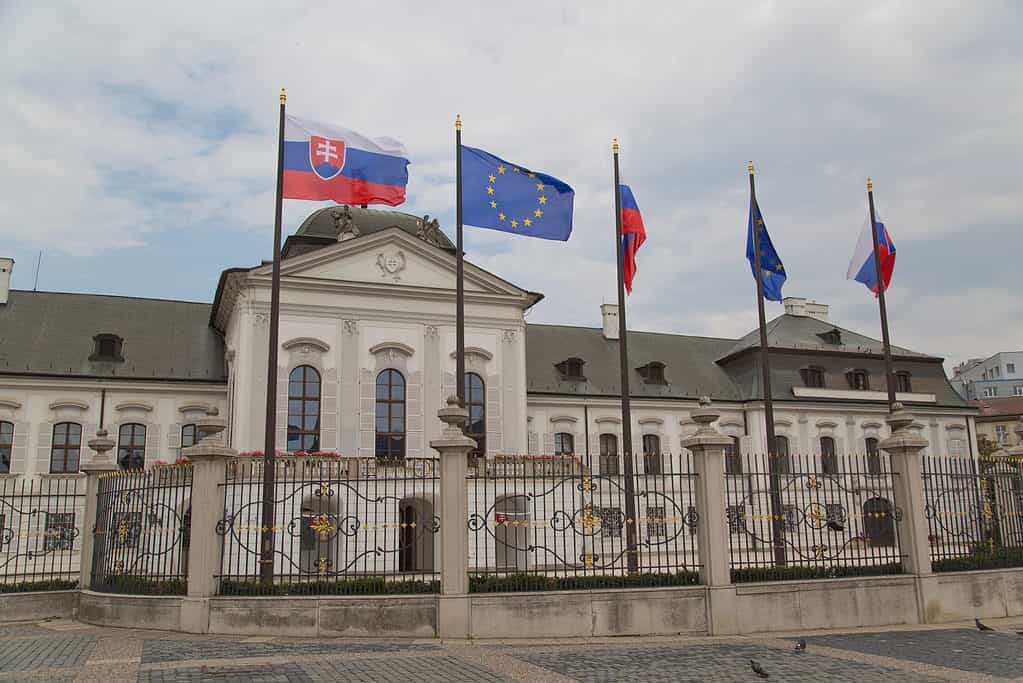
The capital of Slovakia, Bratislava, has been conquered by different people groups for thousands of years but emerged from the Czechoslovakian Republic in 1993.
©Kutikan/Shutterstock.com
Bratislava is the capital of Slovakia and sits on the Danube River near Austria and Hungary. It is the largest city in the country, with about 430,000 people. Bratislava has some record of human presence dating back to prehistoric times, albeit inconsistently. City history includes continuous inhabitation by various peoples over the centuries, including Austrians, Bulgarians, Germans, Serbs, and more. It was part of the Moravian Empire, the Kingdom of Hungary, and the Habsburg Monarchy at different periods. The city is also known for having the first university in Slovakia, Academia Istropolitana, founded in the 15th century!
After World War I, Bratislava became the capital of Slovakia in the first Czechoslovakian Republic, and it remained the capital when Slovakia emerged as an independent nation in 1993 after the “Velvet Divorce.”
5. Varna – c. 4600 BCE

The proximity to the Black Sea allowed Varna to become a key settlement for thousands of years, with human presence potentially dating back 100,000 years.
©GizemG/Shutterstock.com
Varna is a city located on the Bulgarian Black Sea Coast, and due to its important location, it has been an important cultural and economic seat for a very long time. It was likely founded around 4600 BCE, although people have been settled and living in the region for thousands of years before that (some estimates say around 100,000 years ago). Currently, it is the third-largest city in the country, with a population of about 335,000 people.
Varna was founded as Odessos by Milesian Greeks in the 6th century BCE and later became a Thracian, Macedonian, and Roman settlement. In 681 CE, it became part of the First Bulgarian Empire and was renamed Varna. Even more, the Bulgarian Empire’s capital city was probably first founded just outside of Varna near Lake Varna’s north shore before moving to Pliska to the west. Additionally, one of the last major battles of the Crusades occurred in Varna on November 10, 1444, known as the Battle of Varna. The loss of the battle by the Crusaders would eventually lead to the fall of Constantinople a few years later.
6. Athens – 3000 BCE

Athens, one of the most famous cities in the world, is easily recognizable by the Acropolis at the top of the hill.
©Sven Hansche/Shutterstock.com
Few cities are as well-known and famed as Athens. The “birthplace of democracy,” the “cradle of Western civilization,” and a few other nicknames have contributed to this city’s fame. Athens has been continuously inhabited for around 5,000 years and rose to power during the Mycenaean civilization (Greeces Bronze Age) around 1400 BCE.
Athens was founded by the legendary king, Theseus, who united the 12 towns of Attica. The city was then named after Athena, the goddess of wisdom and war. Athena won a contest against Poseidon by offering the olive tree as a gift to the Athenians. The city’s most famous landmark is the Acropolis, a hilltop citadel that contains the Parthenon. The Parthenon is a temple dedicated to their patron, Athena.
It was the center of the Delian League, an alliance of Greek city-states that fought against the Persian Empire in the Greco-Persian Wars. Athens was also home to famous philosophers, such as Socrates, Plato, and Aristotle, who taught at the Academy and the Lyceum. Athens was conquered by Alexander the Great. He was enamored with Greek culture and “Hellenized” the rest of the empire he conquered and spread it further.
7. Thebes – c. 3000 BCE
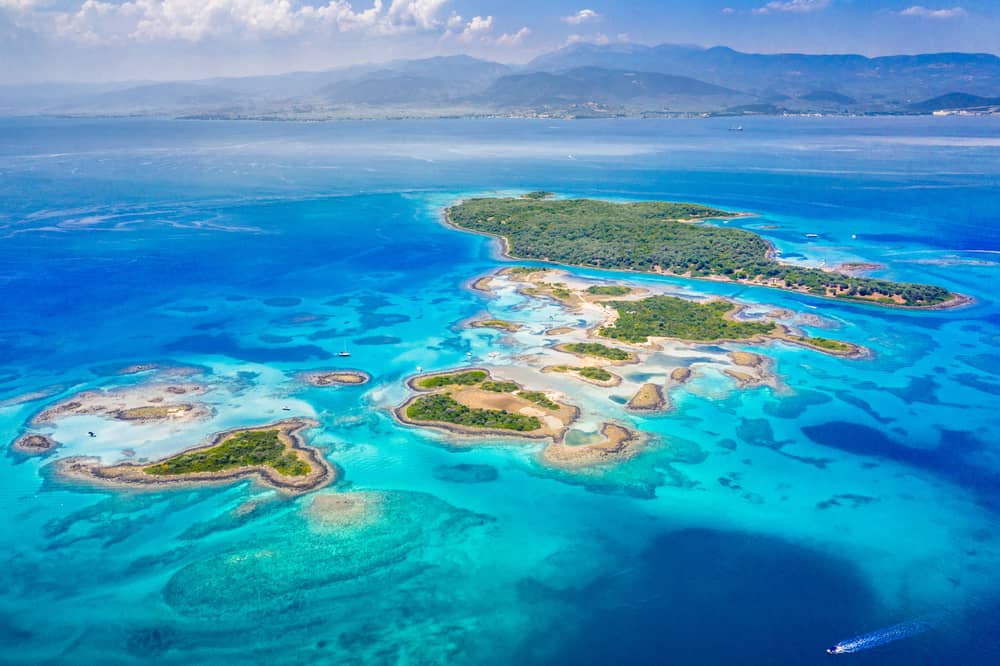
The rivalry between Athens and Thebes was a dominating element of the ancient world in Greece. Thebes was the setting for many stories of ancient Greek heroes.
©Georgios Tsichlis/Shutterstock.com
Although Athens is famed, Thebes is a great contender for the second most well-known city in Greece. As far as age, Thebes is somewhat similar to Athens and has been continuously inhabited since around 3000 BCE. In fact, Thebes and Athens had quite the rivalry back in the day, as they were both powerful city-states that didn’t always see eye to eye. Thebes would eventually side with the Persians during the invasion by Xerxes I.
Thebes became the most powerful city in Greece during the 4th century, although it didn’t hold its title for long. In ancient times, Thebes was the setting for many mythical heroes and journeys, including Cadmus, Oedipus, Dionysus, Hercules, and quite a few more.
8. Nicosia – c. 2500 BCE
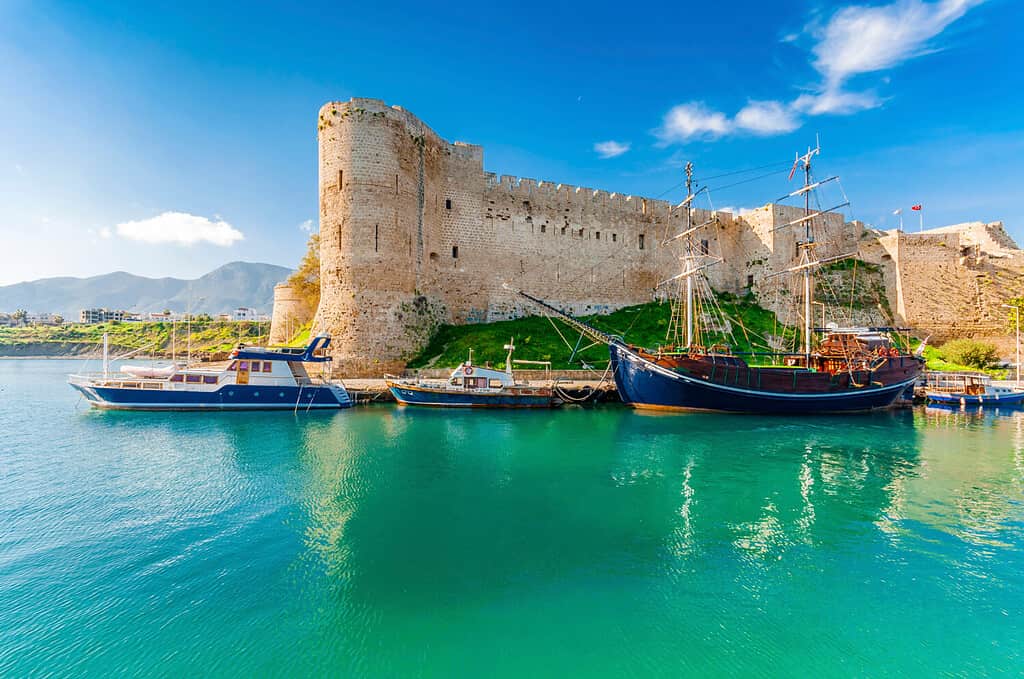
Going by either Nicosia or Kyrenia, this is the only divided capital city in the world.
©Nejdet Duzen/Shutterstock.com
Nicosia is the capital and largest city of Cyprus, located right in the center of the important island. Currently, Nicosia is the only divided capital in the world since it shades a buffer zone between the Republic of Cyprus and the Turkish Republic of Northern Cyprus. It’s also the only remaining Bronze Age settlement left in Cyprus.
Nicosia was founded as a city-state named Ledra, one of the twelve kingdoms of Cyprus built by the Achaeans after the conclusion of the Trojan War. The only remaining record of kingship during this time is one name: Onasagoras. The city was partially destroyed by the Assyrians and soon became an unimportant town for the region until it was restored during the early Christian period; this was probably during the 4th century AD. The capital of Cyprus, Salamis, was destroyed, and Nicosia became the de facto trading city, once again brought to power. Soon, the Byzantine Empire chose it as the capital of Cyprus.
Over the years, Nicosia and Cyprus have been ruled by varied peoples and empires. To this day, the city itself is hotly contested, and tensions remain at an international level as different groups recognize different claims on the city.
9. Mantua – c. 2000 BCE

The city of Mantua was at the heart of Italy’s Renaissance during the 17th century and was a hub for art and opera.
©gab90/Shutterstock.com
Mantua breaks things up a bit as we head further west into Italy for the first time. It’s one of the oldest cities in Italy and one of the oldest in Europe overall. Originally, Mantua was an island settlement on the shores of the River Mincio, and only much later did it become an Etruscan village around the 6th century BCE and refounded by Ocnus.
Even later, Mantua was conquered by a Gallic tribe named the Cenomani, with later battles occurring between Carthage and Rome during the first and second Punic wars. During the time of Agustus, the city was used as a home for his veteran soldiers. It was also home to Virgil, one of the most famous poets of the ancient world.
After the fall of the Roman Empire, Mantua bounced around between the Ostrogoths, the Eastern Roman Empire, the Lombards, the Frankish Empire, and more. It would eventually become one of the most influential cities during the Italian Renaissance and was ruled by the Gonzaga family for a few hundred years.
10. Chania – c. 1600 BCE

Crete’s capital city until 1971, Chania, is one of the most important cities on the island.
©Neirfy/Shutterstock.com
Chania has been continuously inhabited for over 3,000 years (since the Neolithic era) and is one of the most important cities in Crete, home to the famous Minoans. It was originally named Kydonia. It eventually became an important city-state of Greece and was primarily settled by the Dorians by 1100 BCE.
Ancient Kydonia often found itself fighting other city-states, including Aptera, Phalasarna, and Polyrrinia, enough so that the city was even mentioned in Odyssey by Homer. Since then, Chania has been taken over and ruled by the Byzantines, Arabs, Venetians, Ottomans, and Greece. The Greek flag was officially raised over Chania after the succession of control in 1913 after the Balkan Wars over Fort Firka.
More recently, Germany invaded Chania during WWII, and German forces occupied the area. During that time, huge portions of the city’s population fought the occupation and were either imprisoned or executed.
Conclusion
There are a few things worth noting after looking over Europe’s oldest cities. First, they are dominated by civilizations from the east, especially in Greece and other southeastern European countries. This makes sense if we look at the path of human settlements. Humans spread from Asia and the Middle East, settling along the way, primarily along bodies of water like the Black Sea and Mediterranian. Bulgaria, Greece, the Balkans, and the region known as “Thrace” were all hugely influential in the ancient world and continue to be cultural hubs to this day.
Again, finding a single “oldest city in Europe” can be a tall task. Still, all of the cities on our list are extremely old, many of which have consistent inhabitants as far as 8,000 years ago. In some instances, human presence in the area predates even the city. Varna, for example, likely had humans living in the region sporadically or as nomads at least 100,000 years ago!
Regardless, each of the cities on the list is incredibly beautiful, alive in history, and absolutely worth a visit. In cities that old, walking around them, it’s easy to feel the longevity contained within their walls.
Thank you for reading! Have some feedback for us? Contact the AZ Animals editorial team.

